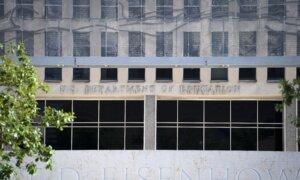On May 5, 2025, the Department of Education (DOE), through its Office of Federal Student Aid (FSA), will begin involuntary collection of student loans that are in default. According to the DOE, this collection affects approximately eight million borrowers who are in default. Student loans haven’t been collected since March 2020, including those in default.
Millions of Borrowers in Default
According to a Department of Education news release, 42.7 million borrowers owe more than $1.6 trillion in student debt.According to the April 21 release, five million of those borrowers haven’t made a monthly payment in over 360 days and sit in default. And many of these five million haven’t made a payment in more than seven years. And, finally, four million borrowers are in late-stage delinquency, between 91 and 180 days.
A small number are in a six-month grace period or in school.
Borrowers Promised Loan Forgiveness by Biden
Department of Education Secretary Linda McMahon said the statement that the Biden administration misled borrowers into thinking the debt could be wiped out completely. She said the DOE will “shepherd the student loan program responsibly and according to the law, which means helping borrowers return to repayment.”Currently, 1.9 million borrowers haven’t been able to begin repayment because of a processing pause put into effect by the Biden administration.
“American taxpayers will no longer be forced to serve as collateral for irresponsible student loan policies,” McMahon said.
FSA Will Restart Treasury Offset Program
On May 5, and over the following two weeks, the Treasury Offset Program, which is administered by the Department of the Treasury, will send borrowers in default an email.The email will urge the borrower to contact the Default Resolution Group to do one of three actions. These actions include making a monthly payment, enrolling in an income-driven repayment plan, or signing up for loan rehabilitation.
Do Student Loans Have Statute of Limitations?
Private student loans have a statute of limitations. The limitations can be from three to 10 years, depending on the state. However, federal student loans do not have a statute of limitations.A federal student loan borrower can be sued for payment at any time. The FSA has the authority to garnish wages, while the Treasury Offset Program can seize tax refunds.
How to Find Out If a Borrower Owes
The Department of Education will contact borrowers in default via email and social media posts. These will be reminders of the borrower’s obligations. They will also provide resources and support to assist the borrower in selecting the best repayment plan.A borrower can also log into StudentAid.gov, which is the Department of Education’s website, and see their loan status on the online dashboard. It will show how much they owe and the payment amount. A warning message will be directed at you if you’re in default.
Will Defaulting on a Student Loan Hurt a Credit Score?
Defaulting on a student loan affects the borrower’s credit score. After all, it is a loan, regardless of what it was for.Although individuals may be able to address their delinquencies, damage to their credit standing will already have been done. A delinquent student loan will stay on a credit report for seven years.
| Credit Score Before Delinquency | Avg. Credit Score After Delinquency |
| Less than 620 | -87 |
| 620–659 | -143 |
| 660–719 | -165 |
| 720–759 | -165 |
| 760 or higher | -171 |
Time to Pay Federal Student Loans
It’s time for student loan borrowers who are delinquent in their payments to pay the piper. The FSA is notifying these borrowers that they must make arrangements to pay back the loans or face wage garnishments.The Treasury Offset Program is also poised to confiscate tax refunds to pay the debt. It has become clear there won’t be any student loan forgiveness.








